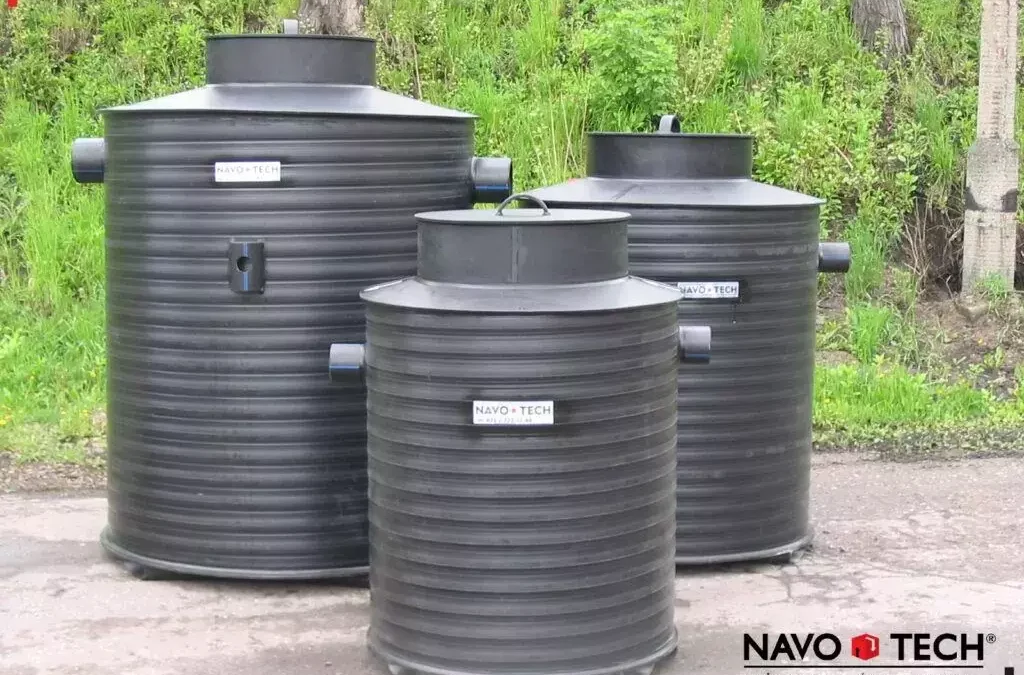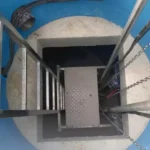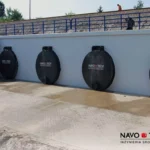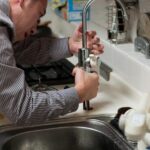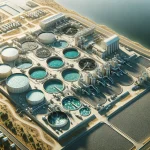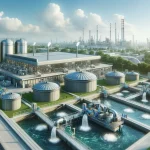When it rains, fuel residues and other harmful to the environment petroleum substances are washed with rainwater into surface waters (streams, rivers, lakes) and may pollute them. To prevent this, separators are used. Thanks to separators, hydrocarbons are removed from the water and stored, helping to ensure that our operations are environmentally friendly.
Table of Contents:
Legal requirement
Cleaning rainwater from oil-based substances is a legal requirement, as stated in the Regulation of the Minister of Maritime Economy and Inland Navigation of July 12, 2019 (Journal of Laws 2019, item 1311) on substances particularly harmful to the water environment and the conditions that must be met when discharging sewage into water or land, and when discharging rainwater or snow to waters or water facilities: § 17. 1. Pursuant to the regulations, rainwater must be purified of oil-based substances if the concentration of these substances is higher than 15 mg/l.
Such substances and harmful suspensions flow from large paved surfaces, on roads, highways, parking lots, gas stations, car washes, bus depots, industrial hallsrailway areas - wherever there are even small oil leaks from internal combustion engines or diesel machines.
Two technologies to choose from
Navotech offers two technologies that have been used in oil separators. These are lamellar technology and coalescing technology. Both solutions guarantee high efficiency and can be installed both in and out of traffic zones green areas.
They are easy to install and use. They are usually connected to a sampling device. For full water protection, it should be supplemented with a sedimentation tank. We also offer devices combined in one chamber, i.e. integrated with the settling tank.
When to choose a lamella separator?
Lamella separator these solutions enable rainwater treatment in larger catchment areas. They are recommended for use at the exits of urban rain collectors, in large parking lots, and for the protection of surface water in industrial plants, logistic centers, and airports. They are also suitable for draining rainwater from highways and roads with heavy traffic. They are designed to purify water with flows greater than nominal, which is their greatest advantage.
The efficiency of initial treatment is 5mg/m3 for the nominal flow, and decreases with increasing flow, but water purification still takes place. This is extremely important when servicing large and very large surfaces from which rainwater flows. The use of lamella separators is then the only effective solution.
Their design allows for the separation and retention of both oil-derived substances and mineral suspended solids (sands, suspensions) contained in rainwater and snow runoff from any type of catchment area.
These devices are recommended for large catchments where more or less rainwater may flow at different times, i.e. where there are varying flow loads and varying oil and suspended solids loads.
When to choose a coalescing separator?
Coalescing separator MAK-PE provides coalescing solutions that ensure rainwater treatment only for the nominal flow. The parameters of the device should be selected so that the nominal capacity of the separator is greater than the maximum flow of rainwater flowing into the device.
These devices are recommended for smaller catchments where pollutants are present in low concentrations, so they are suitable for garages and car washes, gas stations, parking lots, smaller industrial plants, drainage of bridges and road viaducts.
Coalescing separator to petroleum separator, which is used to isolate and retain petroleum substances, as well as mineral suspensions such as sand, sewage and sludge. These pollutants may be present in rainwater and meltwater that flows from various types of catchment areas.
The main structural element of the separator is a tight body made of concrete. It may take the form of a well with a diameter ranging from 1000 to 3000 mm, or it may be a separate chamber inside the retention tank. The body of the device is so massive that it does not require additional load.
Coalescing separators should be fed by gravity. In situations where sewage pumping is required, it is recommended to install a pumping station behind the separator.
Integrated with the settler
Fat separator with a sedimentation tank is a device designed to purify wastewater from fats and oils that may be present in rainwater and meltwater from various types of catchment areas. These devices are commonly used in industries such as catering, food industry, hotel industry, or in various types of industrial plants.
Design of a fat separator with a settling tank consists of two key elements: settler and separator. Settler is intended wastewater treatment from mineral suspensions, while the separator is used to separate fats and oils from water.
Fat separators with a sedimentation tank it works based on the principles of gravity, which means that heavier substances sink to the bottom, while lighter substances float to the surface. This effectively separates fats and oils from the water, allowing them to be safely removed.
Thanks to its design, this device is easy to use and maintain, and at the same time guarantees effective wastewater treatment.
What to consider when choosing a separator?
In conclusion, when choosing the right type of separator, special attention should be paid to:
- the size of the area from which the rainwater drains, which affects the volume of rainwater runoff,
- the amount of suspended solids contained in rainwater,
- operation of the device during storm flow,
- degree of protection of surface waters into which rainwater flows - whether it is a protected zone, what is the speed of the current and how long does it take for the river or stream to self-clean.
Navotech - The best choice for your business
Navotech company is a leader in separation technology, offering a wide range petroleum separatorsthat are reliable, efficient and easy to use. Our products are installed throughout Poland, ensuring the highest quality of services for our customers.
Our MAK-PE devices are designed to purify rainwater discharged from roads, car parks, parking and maneuvering yards, as well as technological sewage from car washes, mechanical workshops, repair shops, gas stations, storage places for vehicle parts, etc. They retain mineral suspensions such as sand , mud, ashes and petroleum substances.
We also offer SL solutions, which are designed to separate petroleum substances (oils, greases, gasoline, etc.). Due to the high throughput of up to 10 [l/s], the SL product line is used in rainwater treatment systems from urban catchment systems, in rainwater networks of industrial plants or equipment bases, in road and car park drainage systems, etc.
We encourage you to contact our team of experts who will help you choose the best solution for your business. Our experience and technical knowledge guarantee that we will provide you with a product that will meet all your requirements and contribute to the protection of our environment.
[email protected]
phone: +48 32 777 11 44
phone: +48 32 777 10 90
Author: M.Sc. Eng. Adam Głogowski

